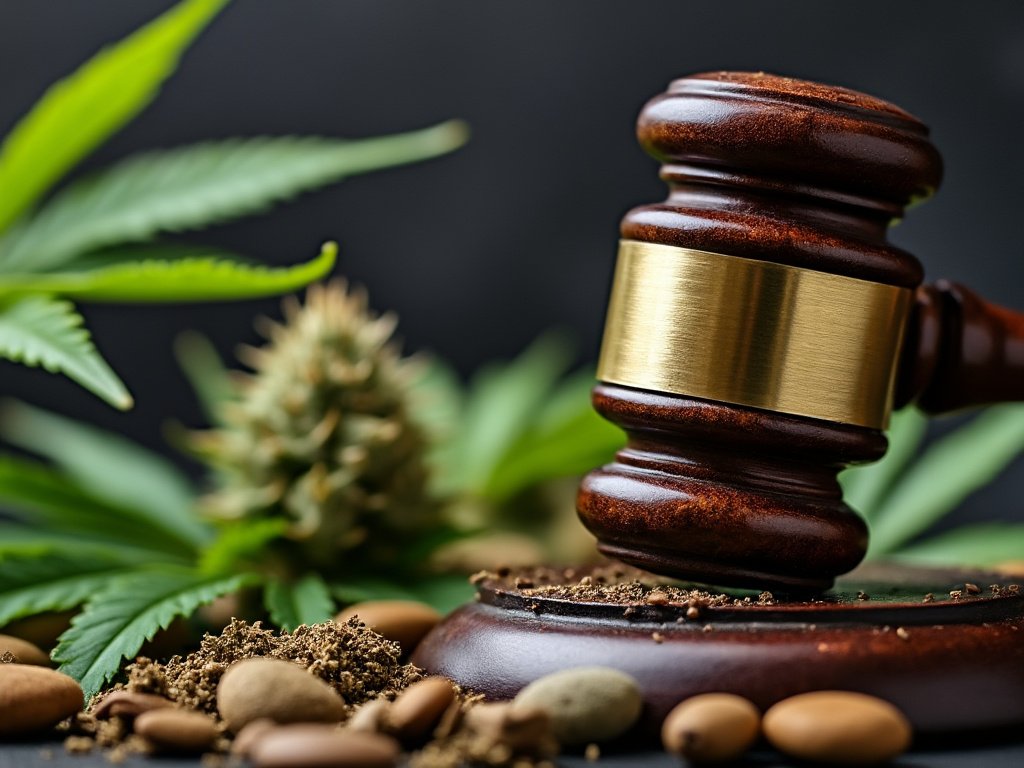There’s a reason why cannabis has gone from being the misunderstood rebel of the botanical world to the mainstream’s darling, and I’m not just talking about the boom in dispensaries. The world has opened its eyes to the multifaceted nature of this plant, recognizing that it’s more than just a way to relax or feel good. It’s a cultural, medicinal, and social phenomenon. And, as someone who enjoys lighting up now and then, I have to say: it’s about time.
The Green Revolution: How Cannabis Went Mainstream
In the last decade or so, the cannabis landscape has changed dramatically. It wasn’t too long ago that enjoying weed was something done in secrecy, behind closed doors, or in the company of trusted friends. Fast forward to now, and it’s no longer taboo to mention in public that you had an edible the night before. In fact, it’s practically normal.
Legalization has been a key driver in this shift. As of today, over half of U.S. states have legalized either medical or recreational cannabis, with more looking to follow suit. Canada, a whole country, is fully on board, while nations in Europe, Africa, and Latin America are inching towards similar paths. The cannabis conversation has shifted from “Should we?” to “How do we do this right?” And while the plant still has its opponents, the sheer number of people enjoying cannabis now tells a very different story.
Cannabis: From Counterculture to Culture
Once the icon of counterculture movements, marijuana has nestled itself comfortably into the fabric of modern life. Back in the 60s and 70s, pot smokers were often seen as societal outsiders – the beatniks, the hippies, the rebels without a cause. They smoked in protest against rigid societal norms and demanded a reevaluation of freedom and consciousness.
Fast forward to today, and cannabis is no longer confined to the fringes. Whether it’s high-functioning professionals microdosing THC during their workday or soccer moms indulging in CBD gummies to take the edge off, weed has found its place in every corner of society. Mainstream celebrities are coming out of the “green closet,” brands like Seth Rogen’s Houseplant and Jay-Z’s Monogram have capitalized on cannabis culture, and suddenly, smoking a joint is as acceptable as having a glass of wine after dinner.
It’s been fascinating to watch this evolution as someone who’s always been part of the culture. There’s no longer a need to hide the fact that I smoke; the stigma has faded. More importantly, people are now more open to having honest discussions about the benefits and uses of the plant.
Medicinal Marvel: How Cannabis is Reshaping Healthcare
Beyond the cultural acceptance of cannabis, its medicinal value is now undeniable. For years, cannabis advocates have sworn by the plant’s therapeutic effects, and finally, science is catching up. Research now backs what we long suspected: cannabis has a variety of medicinal properties.
One of the most well-known uses of cannabis is for pain relief. Many people, myself included, have found that cannabis works wonders for chronic pain and inflammation. Rather than relying on potentially addictive opioids or over-the-counter painkillers with harmful side effects, a joint or a few drops of CBD oil can bring relief.
And then there’s the issue of anxiety and stress. I can speak from personal experience: after a particularly long day or during periods of intense stress, a little weed helps melt the tension away. It’s no wonder that people are reaching for cannabis instead of alcohol when they want to unwind. Plus, there’s less of a hangover.
But the benefits don’t stop there. Cannabis has shown promise in treating epilepsy, particularly in children. CBD, one of the plant’s non-psychoactive components, has been a game-changer for families dealing with severe epilepsy. Just ask the parents of children with Dravet syndrome, who have seen their children go from having multiple seizures a day to leading relatively normal lives thanks to cannabis-based treatments.
The Art of Smoking: Appreciating Cannabis Like Fine Wine
Smoking cannabis is an art form, and if you’ve been in the game long enough, you’ll know there’s more to it than just getting high. Much like wine connoisseurs talk about the subtle notes in their glass of Merlot, seasoned cannabis users will rave about terpenes, strains, and consumption methods.
Let’s talk strains. From sativas that give you a burst of energy and creativity, to indicas that provide deep relaxation and “couch-lock,” the variety of cannabis out there is vast. Want to feel euphoric and social? You’re probably reaching for a sativa-dominant hybrid. Looking to calm your body and mind after a long day? That indica is your friend.
And then there are the terpenes – the aromatic compounds that give cannabis its distinct smell and flavor. Ever crack open a jar of buds and get hit with a citrusy, piney, or even cheesy aroma? That’s the terpenes talking. Different terpenes have different effects: some can be relaxing, while others are invigorating. They add a layer of complexity to the smoking experience, making each session unique.
Edibles, Tinctures, and Vapes: Expanding Beyond the Joint
While I love a good old-fashioned joint, the ways to consume cannabis today are seemingly endless. Edibles, for example, have come a long way from the homemade brownies of yesteryear. Nowadays, you can find everything from THC-infused chocolates to savory snacks, each with precise dosages listed on the package.
Edibles are an excellent option for those who prefer not to smoke but still want to enjoy the effects of cannabis. The trick is patience. Unlike smoking, where the effects are felt almost immediately, edibles can take anywhere from 30 minutes to two hours to kick in. Pro tip: always start low and slow with edibles, especially if you’re new to them. I’ve learned that the hard way!
Tinctures are another discreet way to enjoy cannabis, perfect for those who want control over their dosage. A few drops under the tongue, and you’re good to go. They’re particularly popular with medical users who need to control their intake throughout the day.
Vaping has also exploded in popularity. Offering a cleaner, more potent hit without the harshness of smoke, vaporizers have become a favorite among seasoned users and newcomers alike. They’re portable, easy to use, and often come with various strain-specific cartridges.
Cannabis and Creativity: Fueling the Artistic Fire
Anyone who’s ever enjoyed cannabis knows that it can unlock creativity in ways that few other substances can. There’s something about lighting up that makes the world feel just a little more vibrant. Colors pop, music sounds richer, and ideas flow more freely. As a journalist and occasional creative writer, I’ve often found that smoking helps me tap into thoughts and perspectives that feel out of reach when sober.
It’s no coincidence that artists, writers, and musicians have long been cannabis enthusiasts. Weed’s ability to quiet the noise of daily life and open up a more abstract way of thinking makes it the perfect companion for artistic endeavors. I’ve had some of my best brainstorming sessions with a joint in hand – ideas that might have felt too silly or outlandish sober suddenly seem brilliant after a few puffs.
The Road Ahead: Cannabis’ Future in Society
The future of cannabis looks bright. With the continued push for legalization across the U.S. and globally, it’s only a matter of time before cannabis is as normalized as alcohol or tobacco. But, of course, this brings challenges too. How do we ensure that this growing industry doesn’t fall into the hands of massive corporations that edge out small businesses? How do we continue to educate people on responsible consumption? And how do we address the damage that the war on drugs has caused, particularly to communities of color?
As we move forward, it’s important that we keep these conversations alive. Cannabis is more than a commodity; it’s a plant with deep cultural, medicinal, and personal significance. And as someone who smokes, I can only hope that the future of cannabis stays as open and diverse as the community that’s been cultivating it for decades.






